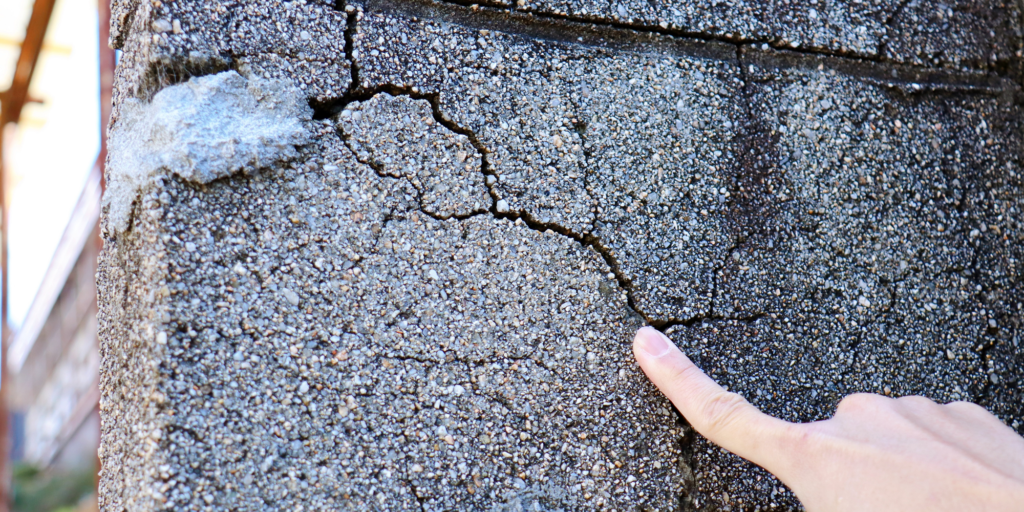Welcome to our blog post on asphalt road damage and repair! Drivers have all struggled with potholes and road fissures. These flaws cause a rough ride and major safety risks. It’s crucial to understand the different forms of damage and the best ways to fix them.
Potholes
Potholes—every driver’s nightmare. These road holes can damage cars and strain our tolerance. What causes these annoying potholes? It starts with water.
Asphalt fissures let water in during rain and snow. This trapped moisture expands and contracts with temperature, damaging pavement. Heavy traffic spells calamity.
Without warning, little depressions become potholes that seem intent to swallow tires. Driving around them becomes an Olympic sport—dodging like a pro.
How do we mend road craters? Preparation comes first. Pothole repair technicians removed trash and applied a tack coat to strengthen the asphalt-new bond.
Hot mixed asphalt, a mixture of aggregate materials coated in heated liquid asphalt binder, is then compacted using specialized equipment to fill the void. To blend with the road, surplus material is eliminated.
Long-term repairs are essential for road safety, but interim remedies may be used in emergencies. When you face a pothole-filled street, know that there are ways to smooth your ride!
Alligator Cracking
Asphalt roads often develop alligator cracking, also known as fatigue cracking or crocodile cracking. Its pattern resembles alligator scales, hence its name. Traffic loading and pavement age generate this crack.
Alligator cracks begin as microscopic, linked road surface cracks. Untreated cracks can spread deeper into pavement layers. They often indicate road structural difficulties.
Alligator cracking severity varies. It may damage a small region or big sections of the road. Prevention of additional degradation and more expensive repairs requires quick repair regardless of size or scope.
Alligator cracking can be repaired using different methods based on climate and budget. Pavement deterioration is often replaced with new asphalt mixtures. An overlay can strengthen the afflicted areas.
Sealcoating and crack filling can prevent alligator cracking from deepening. Proper drainage systems should also be installed to prevent water from accumulating under the pavement.
Alligator cracking must be addressed before it becomes serious. We can extend asphalt road life and ensure safe driving by addressing this issue early on with adequate repair and maintenance!
Edge Cracks
Asphalt road degradation most often involves edge cracks. Cracks usually appear along pavement edges near curbs, gutters, or other structures. They start tiny and narrow but expand swiftly if untreated.
Several conditions can cause edge fractures. Water intrusion into asphalt foundation layers is a primary reason. This water erodes and weakens basic materials, splitting the edges.
Poor construction or installation can cause edge cracks. Inadequate compaction during initial construction or failure to establish a firm link between layers might exacerbate edge cracking.
Edge cracks can be repaired using several methods depending on their degree and extent. A suitable sealer may fill minor fissures. Reduces water infiltration into the pavement structure.
Patching may be needed for severe edge cracking. Damaged pavement was replaced using hot mixed asphalt. This makes the repair stronger and more durable than just plugging the fracture.
Regular maintenance inspections should also detect edge cracking issues before they progress. Quick repairs improve asphalt road life and make driving safer.
Remember, repairing edge fractures quickly minimizes future deterioration and improves road safety!
Transverse Cracks
Transverse fissures are another typical asphalt road damage. These fissures resemble pavement lines and run perpendicular to traffic. Their length and width vary, although they are usually wider than edge or block cracks.
Several conditions can cause transverse cracks. Temperature changes matter. As temperatures increase and fall, asphalt expands and compresses, stressing pavement. Stress can cause cracking over time.
Poor construction or basic materials also contribute. An asphalt road with a weak foundation or poor construction may develop transverse cracks.
Sealing transverse cracks is common. A specific sealant is used to plug cracks to avoid water intrusion and further damage.
Block Cracks
Block cracks are another typical asphalt road issue. Named for its massive rectangular block-like crack pattern.
Heavy traffic and age-related deterioration generate these fissures. Block cracking occurs when asphalt pavement becomes brittle and loses flexibility.
Block cracks allow water to permeate asphalt roads, compromising their structural integrity. Untreated, this can cause potholes or alligator cracking.
Block cracks must be repaired immediately to avoid further damage. One efficient method is hot mix asphalt mending. We remove the damaged area and replace it with hot mix asphalt that matches the surface.
Block cracks can develop and cause further harm if not maintained and repaired regularly. Addressing these concerns early will extend the life of your asphalt road and make driving safer.

Solution: Hot Mix Asphalt Patching
Asphalt road integrity is essential for safe and smooth mobility. Knowing the different types of damage can help us see problems early and solve them.
Water seeping into crevices, freezing, and spreading causes potholes. Heavy traffic loads or inadequate base support induce alligator cracking, which looks like alligator skin. Poor drainage or support causes road edge fractures.
Temperature changes and age generate transverse cracks perpendicular to the road’s centerline. Due to asphalt pavement shrinkage, rectangular block cracks form.
Lucky for you, hot mix asphalt repair exists. This approach involves heating fresh asphalt mix and applying it to damaged areas. Heat mix bonds with pavement to provide a robust repair that blends in.
Hot mixed asphalt patching has many benefits for road damage restoration. It withstands intense traffic and prevents moisture from invading underneath layers. Instead of replacing entire sections of the road, repairing targeted parts decreases costs and traffic inconvenience.
Our roads need frequent upkeep to avoid major harm. Routine inspections for symptoms of deterioration allow us to fix concerns before they become bigger.
Understanding asphalt road deterioration and using effective remedies like hot mix asphalt patching may extend the life of our infrastructure and make travel safer.
Next time you see potholes or other damage on your local roadways, remember that hot mix asphalt patching may restore them!

